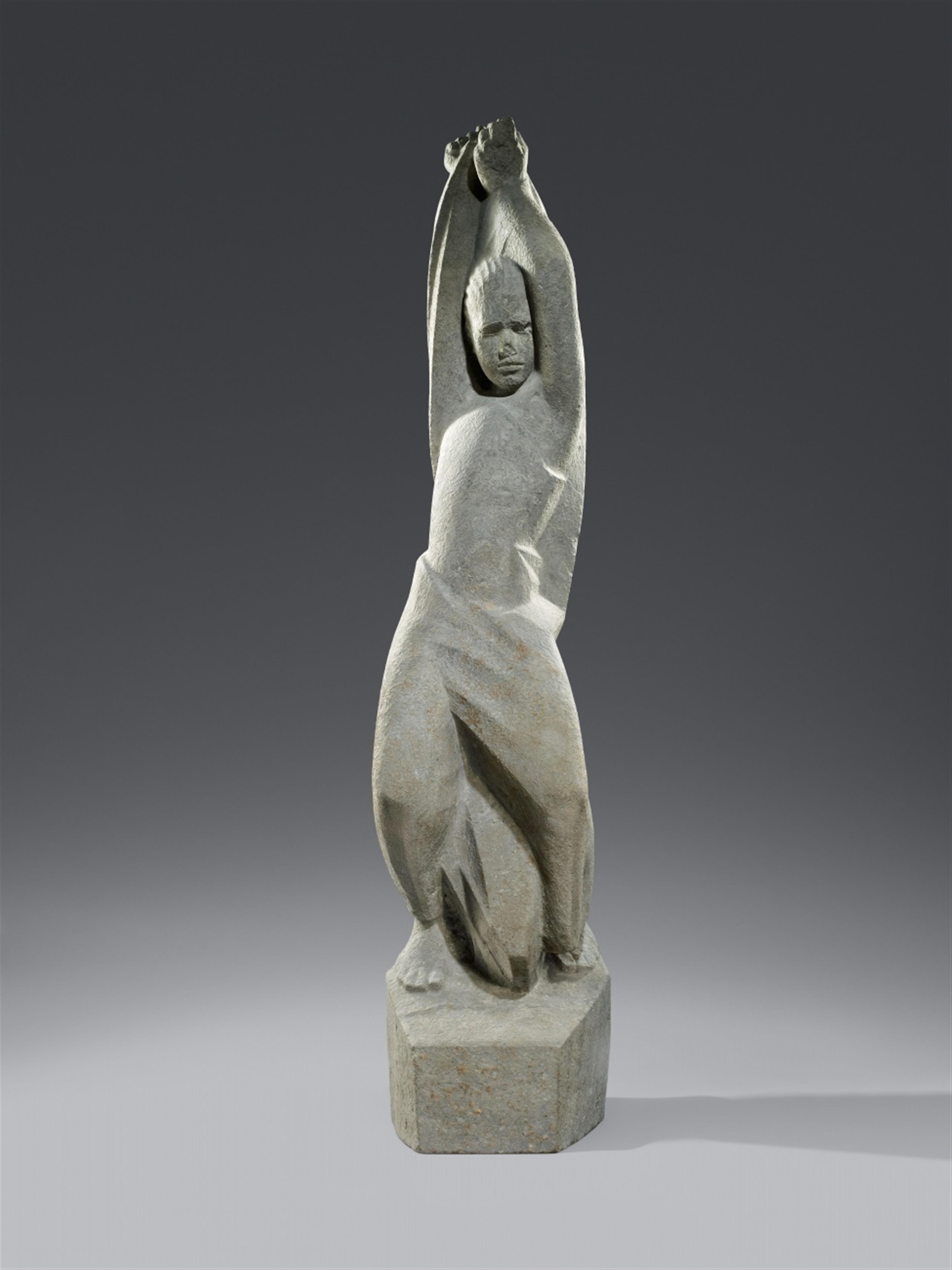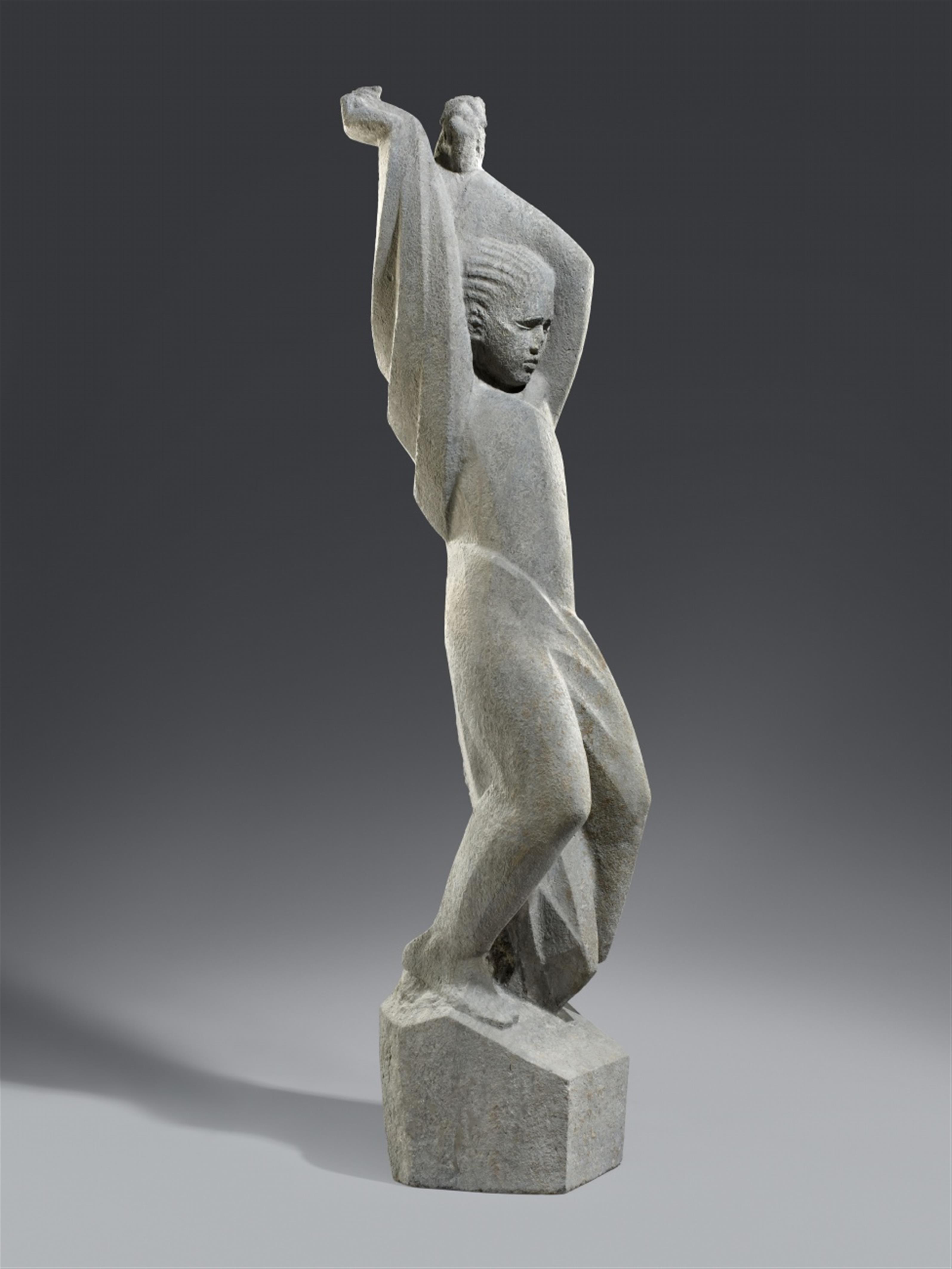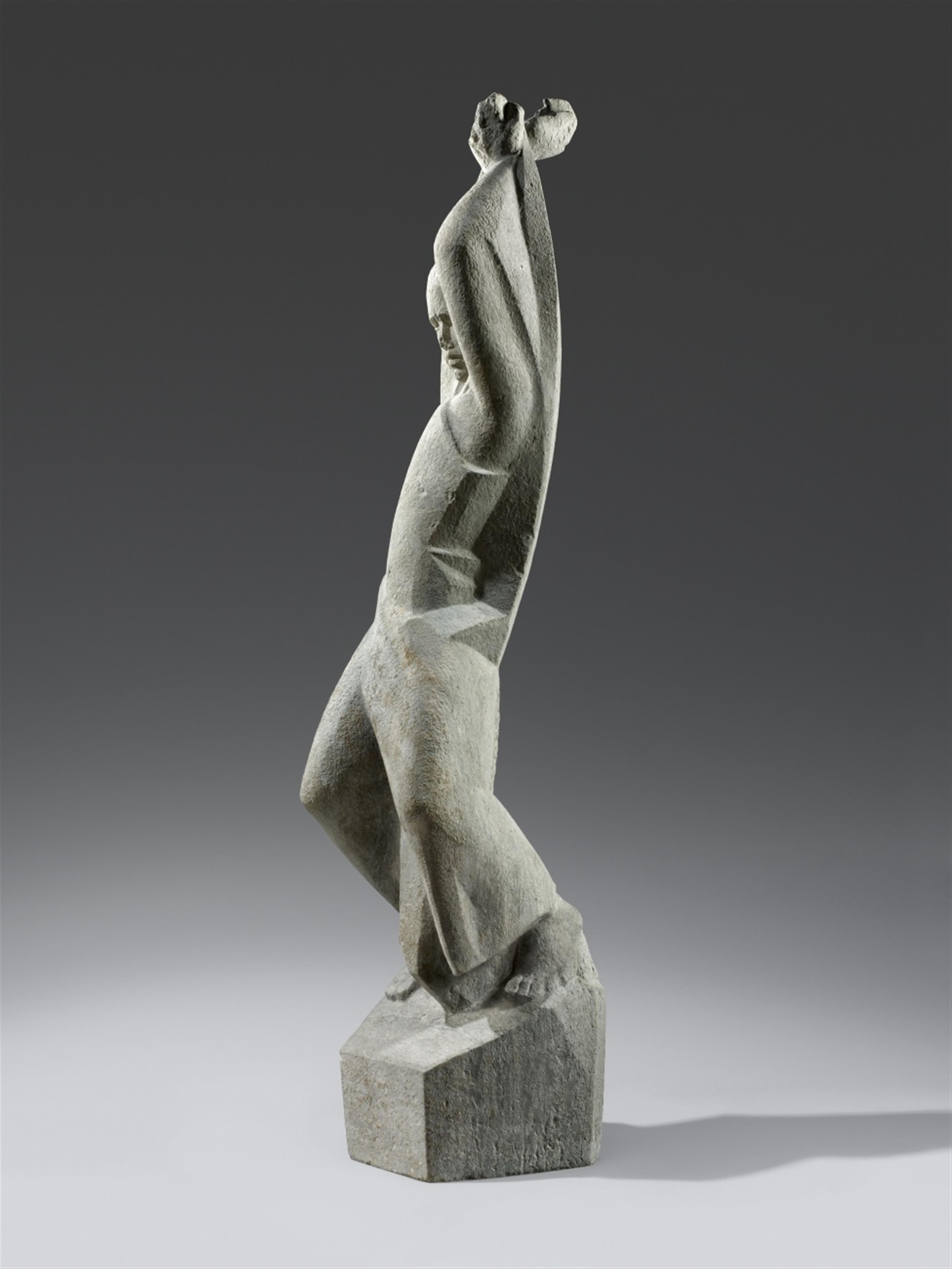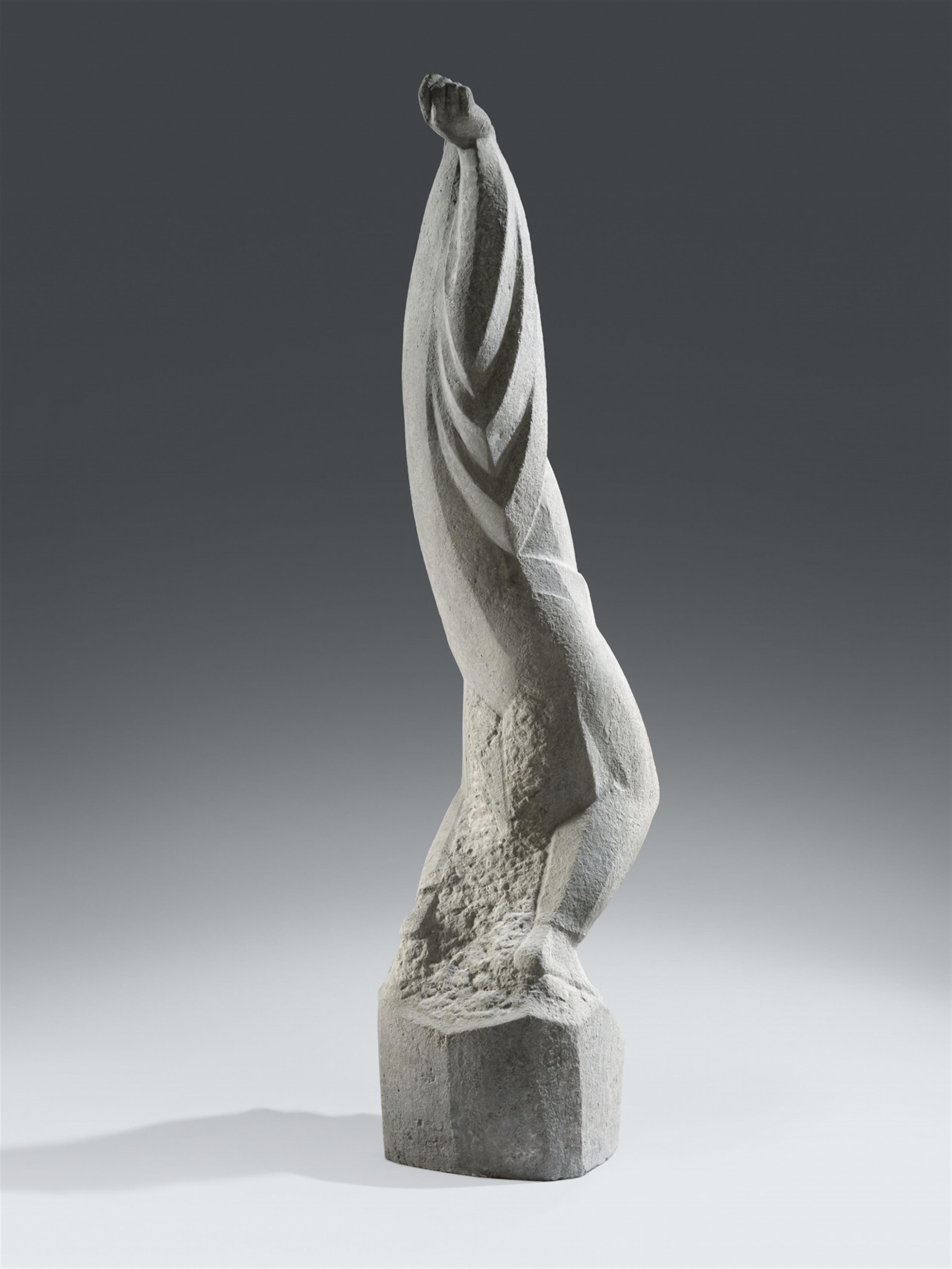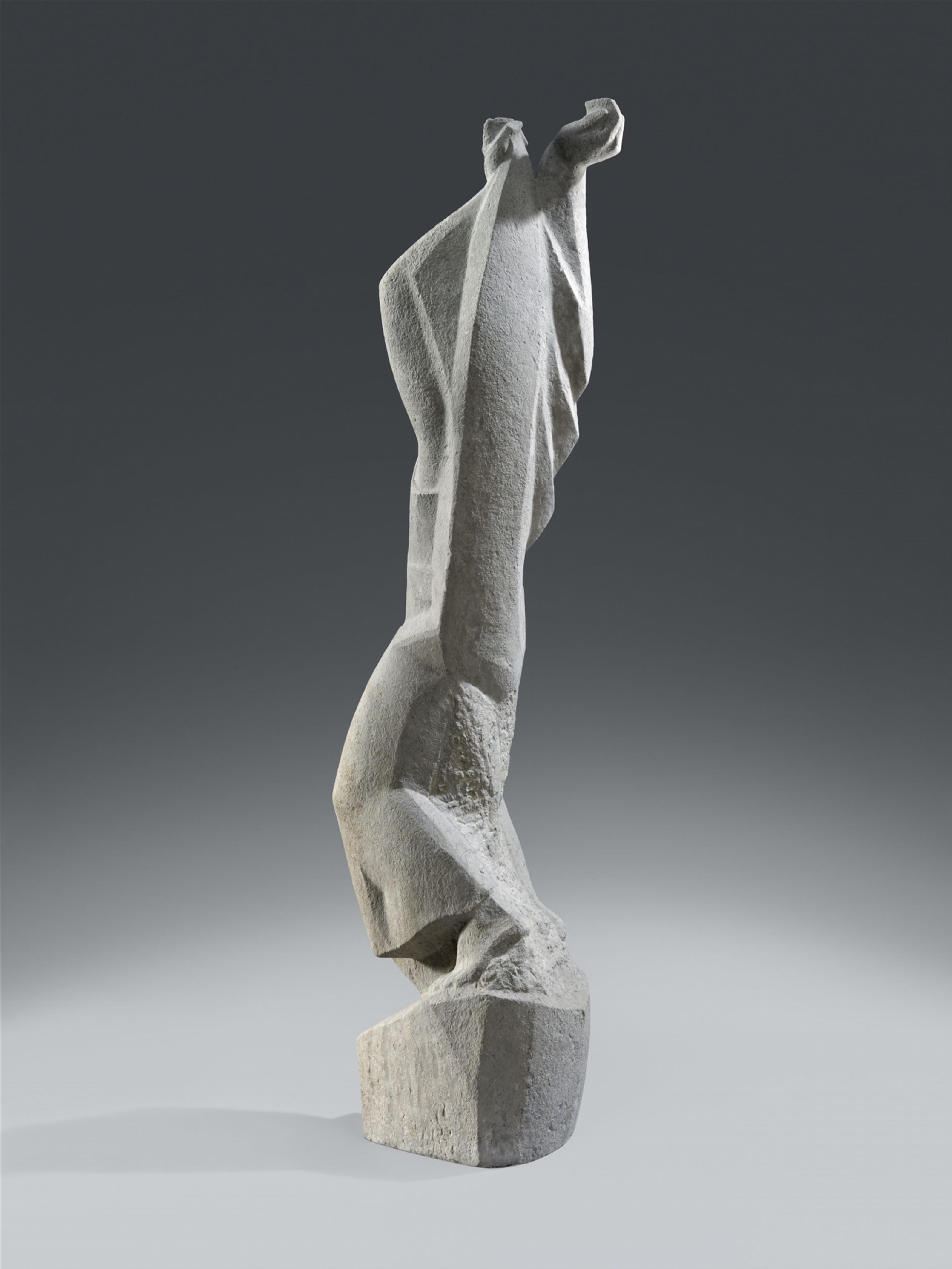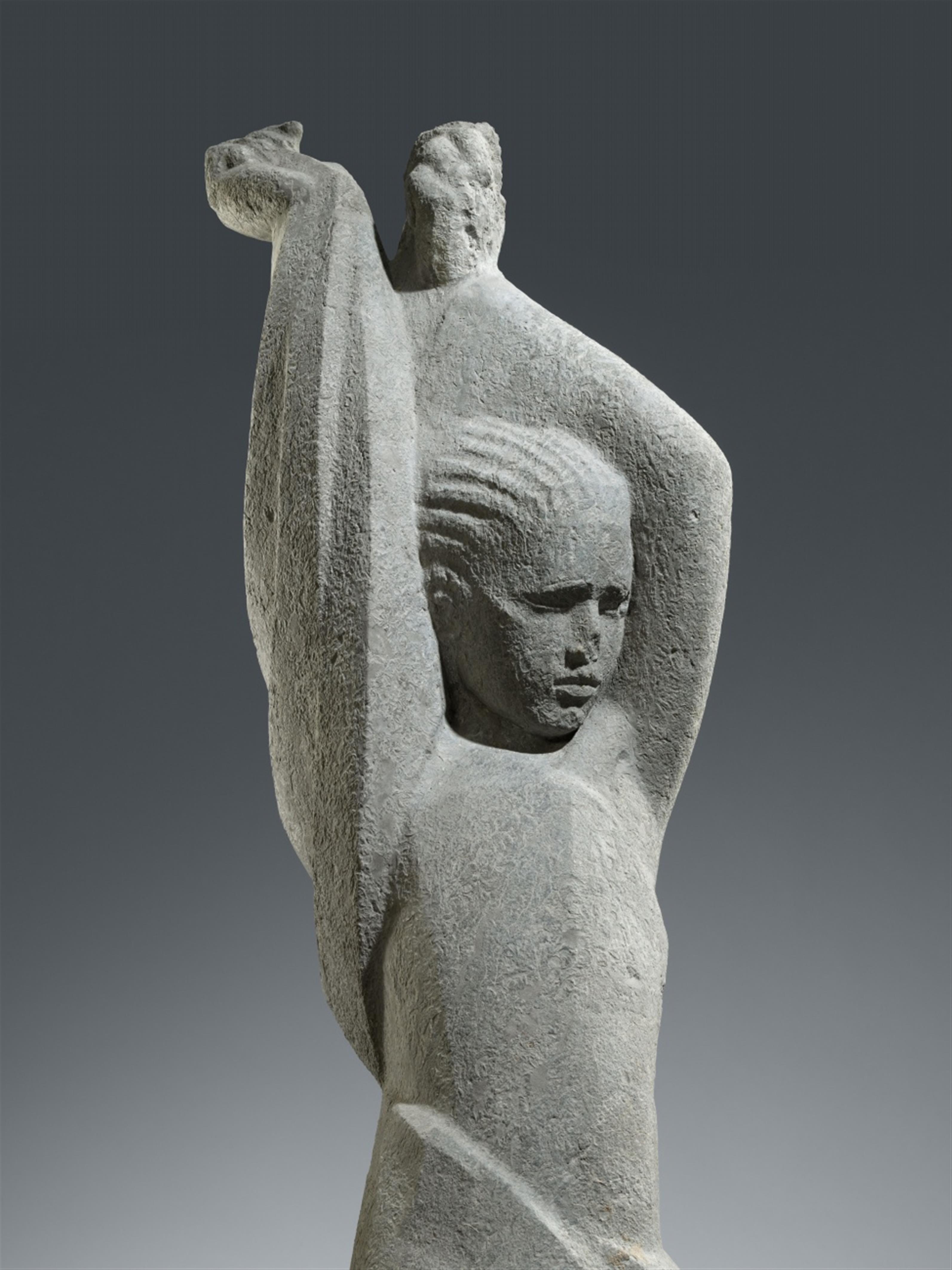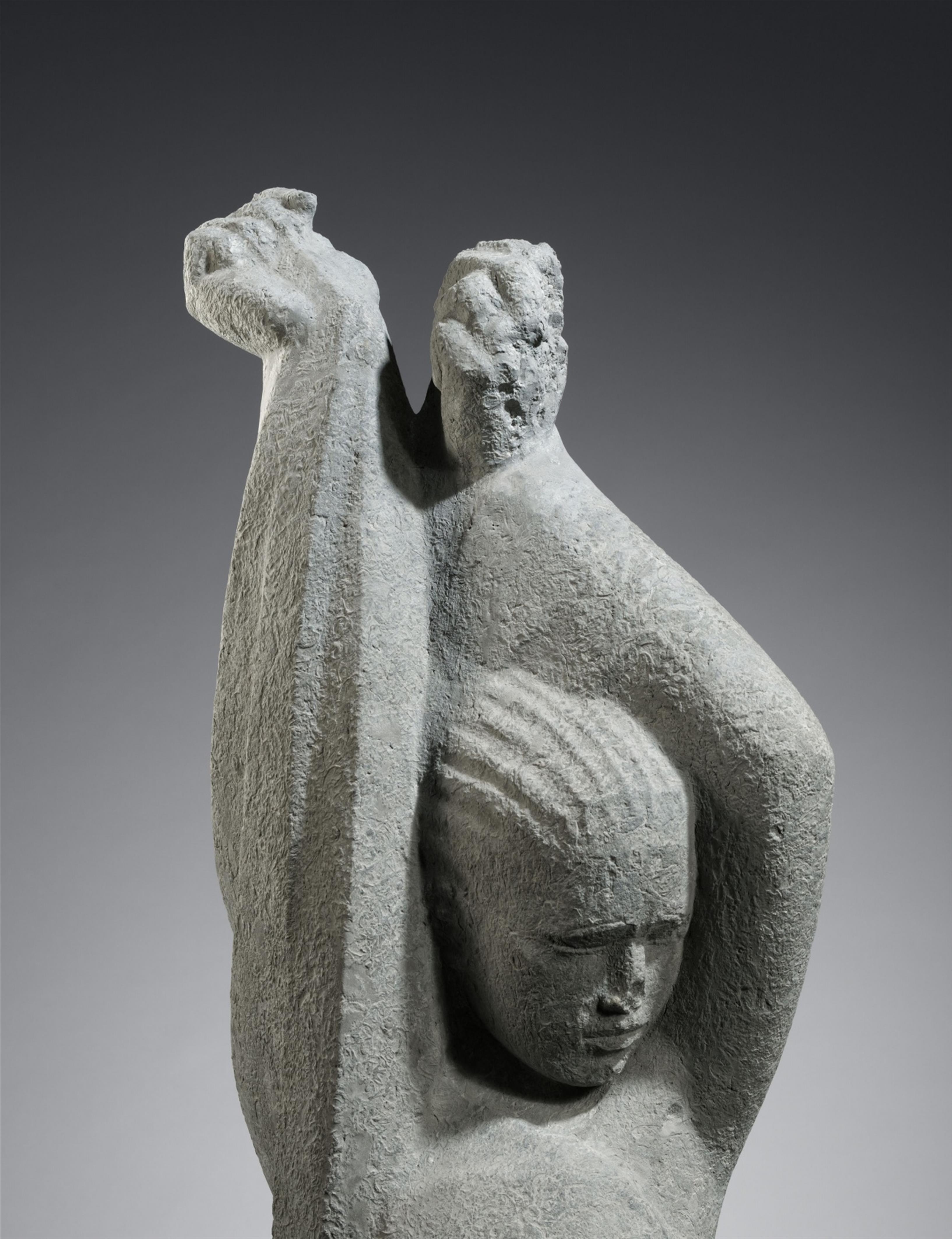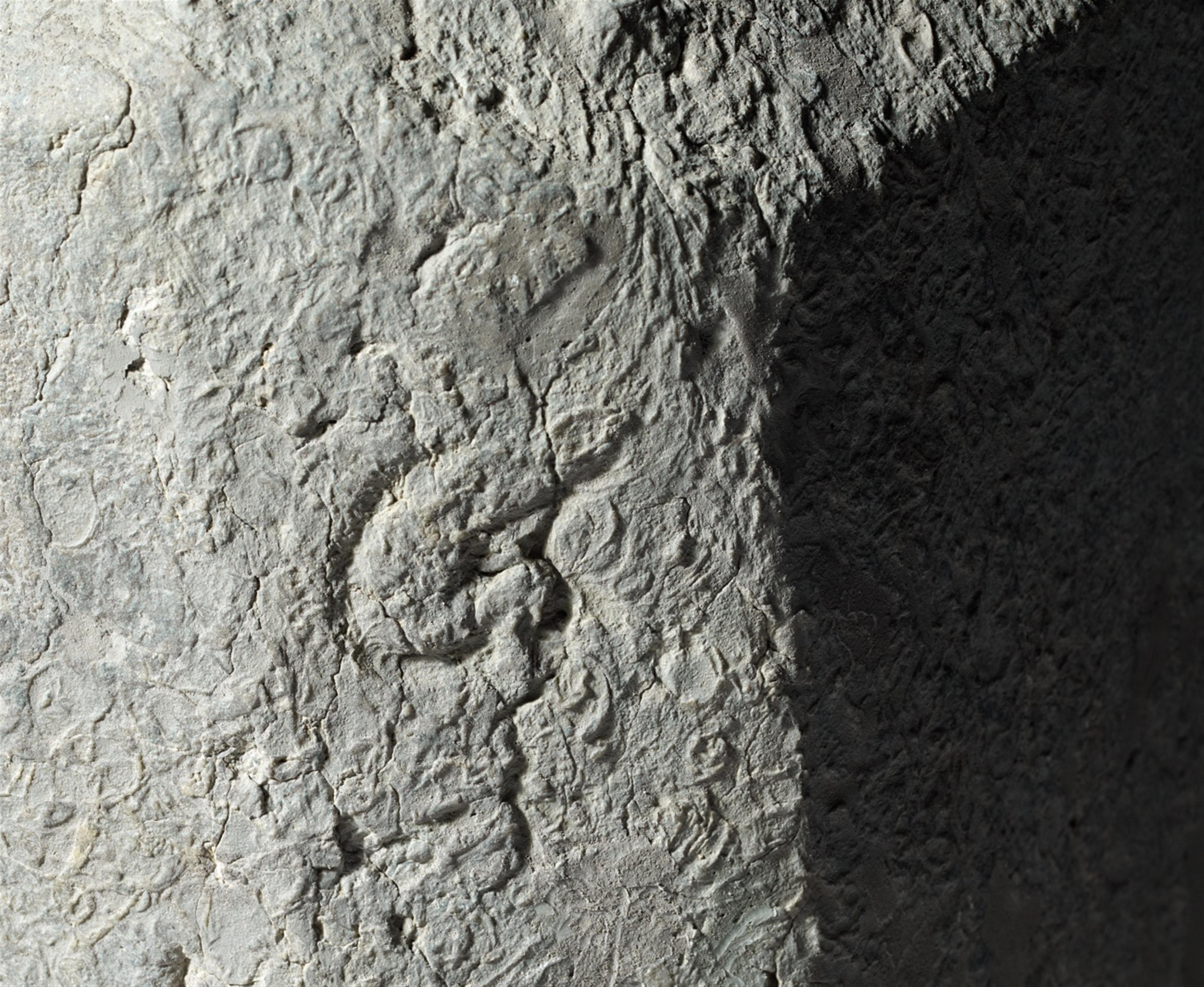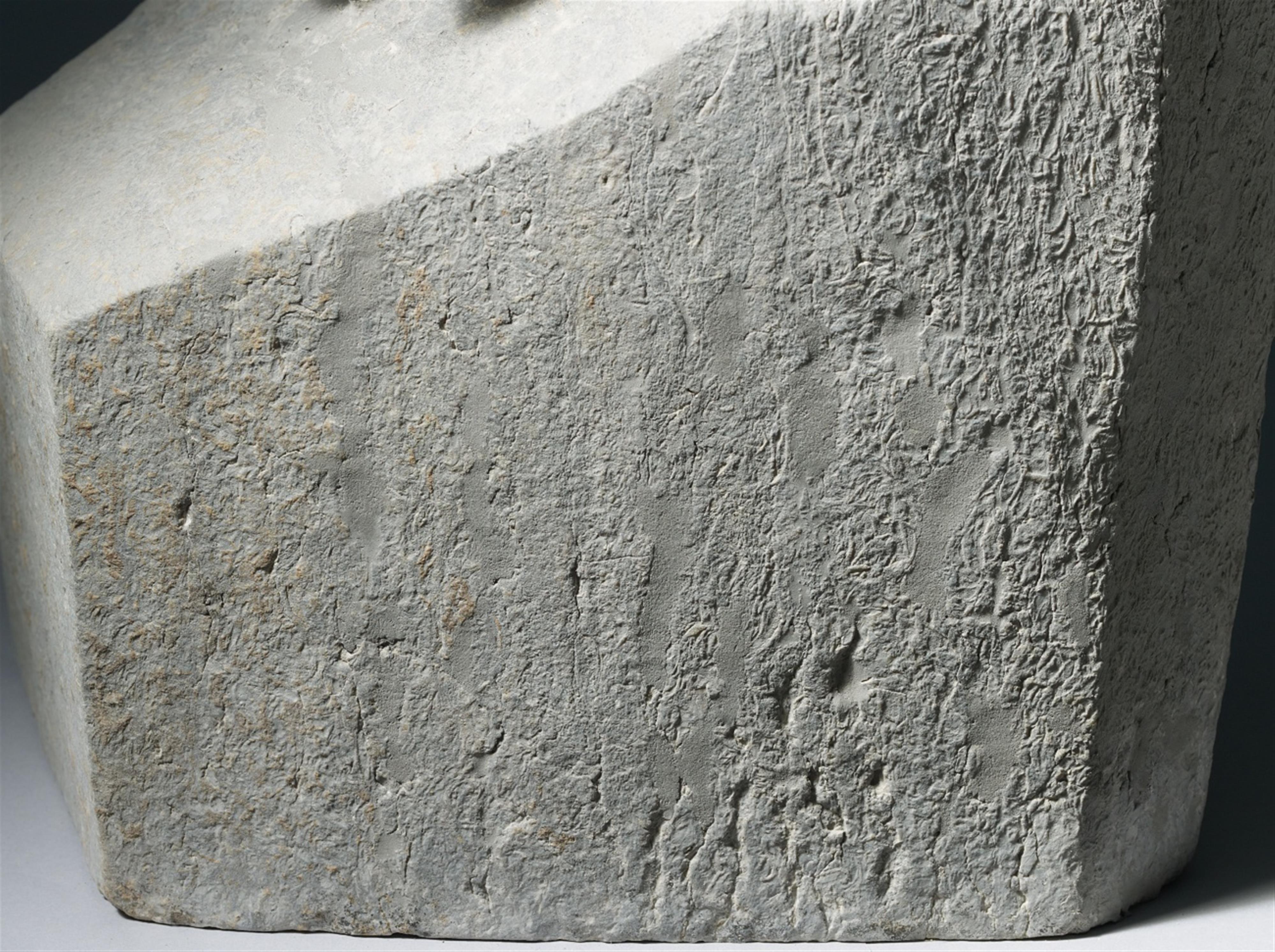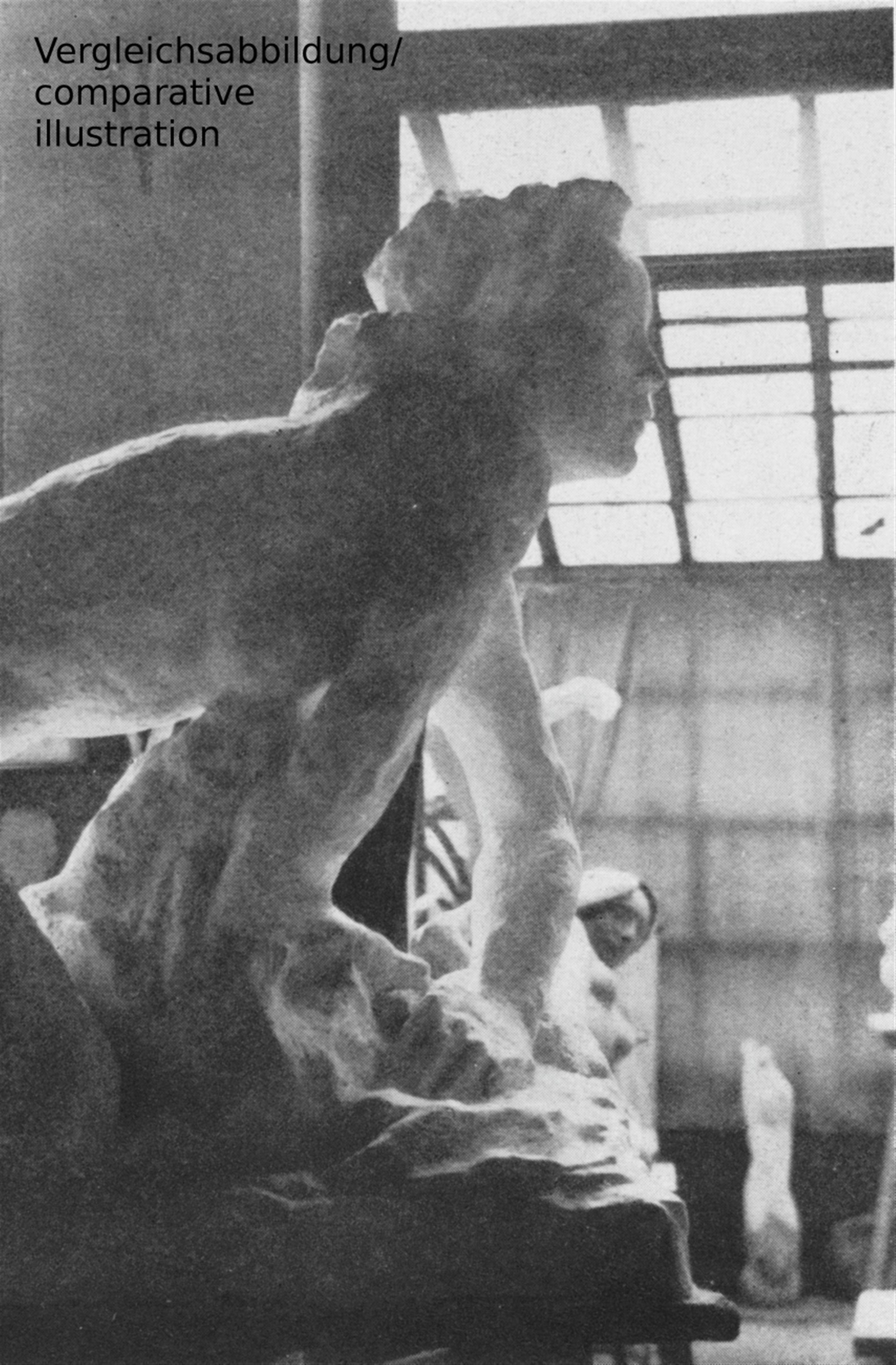Georg Kolbe
Zorn (Flamme)
1922/1923
Stone sculpture. Shell limestone Height 173.5 cm Monogrammed 'GK' (joined) on the back right side of the base. - Age-related traces of weathering. Professionally cleaned and restored.
The rediscovered, life-sized stone version of the sculpture “Zorn” (also called “Flamme” during Kolbe's lifetime) represents a substantial supplement to Georg Kolbe's known oeuvre. Until now it had been known as a probable work only through a document inscribed by Margrit Schwartzkopff (1903-1969), the photographer and first director of the Georg-Kolbe-Museum in Berlin. Presumably created around 1922/1923, the stone version was set up in the rose garden of the Schniewind family in Neviges. Until January of 2016 it enjoyed an enchanted and reclusive existence there for decades, also after the property changed owners in the 1970s (see comparative illus.).
Previously no one had any further knowledge regarding its actual existence, execution and whereabouts (cf. Ursel Berger, Georg Kolbe - Leben und Werk, mit dem Katalog der Kolbe-Plastiken im Georg-Kolbe-Museum, Berlin 1990, p. 262). The artist's plaster model on which the motif was originally based can be detected on a photo of Kolbe's studio (see comparative illus.). A slightly smaller polychrome wooden variation is preserved in the Kolbe Museum (height 166 cm, see Berger 53).
“The enlarged versions executed in stone as well as in wood [...] are by Alfred Dietrich or Josef Gobes, both of whom often worked for the sculptor as stonemasons and had formed a joint studio together at that time [...]. A receipt written by Dietrich and Gobes in June of 1923 for wood-carving work is preserved in the Georg-Kolbe-Museum. It is likely that the stone figure was also produced at that time. [...] The fact that, in 1922/23, Kolbe had several figures produced in stone or wood - instead of the usual bronze - was a result of the inflation crisis: because of money's rampant devaluation, it was scarcely possible to calculate the costs of a time-consuming bronze casting, with the result that Kolbe turned to other materials.” (Ursel Berger in her expertise).
Berger does not exclude the possibility that this figure was developed in connection with a monument design, perhaps a war memorial. This strongly expressive sculpture is to be classified among Kolbe's Expressionist body of work and belongs stylistically to the sequence of comparable sculptures from the early 1920s. These works draw their artistic tension from their intrinsic movement and the formal antagonism between body and drapery. The bronze “Adagio” has become the most famous icon of this period, but the stone and wooden sculptures of “Erwachen”, “Törichter Engel” and “Nonne” ought to be mentioned in this context. Inspired by expressive dance, Kolbe uses gesture and form to convey a state of being, aimed at the expression of emotion, of a strong inner movement. Here the possible interpretation is provided through the historically documented titles of “Zorn” or “Flamme”. At the same time, a high degree of abstraction, aimed at achieving timelessness, and an angular and Cubist-influenced stylisation in the details can be observed and are typical of this phase in his oeuvre. The extensive and stretched movement of the almost life-sized figure is remarkable: the body is thrust backwards and its slight elastic inflection, which derives from the bent knees, becomes more rigid in the upper body, through the arms stretched above and the balled fists. These seem to tear the cloak upwards and away, as though in a gesture of liberation.
It was presumably Kolbe himself who wrote in the foreword to the first exhibition of the “Freie Secession” in 1919 after the war: “Disintergration and dissolution are what the war has left behind for us. It seems impossible to halt, rebellion is not yet conceivable. For this very reason our little strength must be gathered together again and again for the coming works. In this sense we consider our exhibition necessary ... We the living want to continue to stir our hands and we devote them to art every day.” (cited in: Ursel Berger, op. cit. Berlin 1990, p. 64). Works by Wilhelm Lehmbruck were also shown in this exhibition. Georg Kolbe and Karl Schmidt-Rottluff met at his funeral. They travelled to Italy and France together in 1923/1924, and a lifelong friendship would unite them following this epochal rupture and awakening in art. The powerful and expressive spirit of this sculpture by Georg Kolbe may reflect the tumultuous, politically and artistically revolutionary moments of that time.
Catalogue Raisonné
Cf. Berger 53 (Wooden version)
Certificate
With an expertise by Ursel Berger, Berlin, dated 29 March 2016
Provenance
Formerly collection Schniewind, Neviges; Private possession, North Rhine-Westphalia (since 1977); in family possession since
Literature
Deutsche Kunst und Dekoration, Darmstadt, vol. LIII (Oct. 1923 - March 1924), January 1924, p. 201 with illustrations ("Holzplastik 'Zorn', Dreiviertel Lebensgrösse 1923."), cf. also generally the previous article by Georg Kolbe, "Begleit-Wort", p. 195-196; Rudolf G. Binding, Vom Leben der Plastik. Inhalt und Schönheit des Werkes von Georg Kolbe, Berlin 1933, p. 28 with illus. (photo of the studio)

